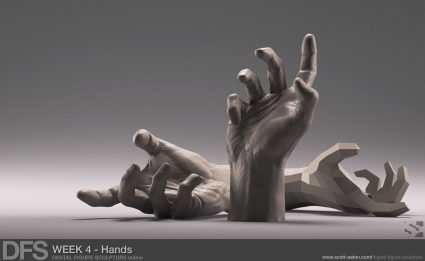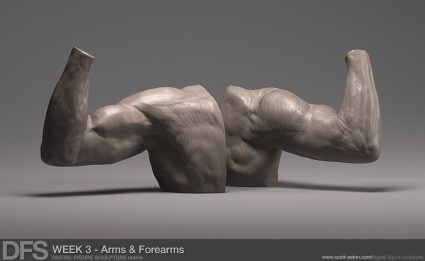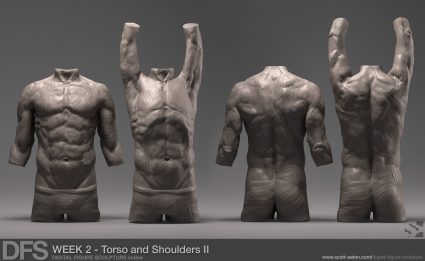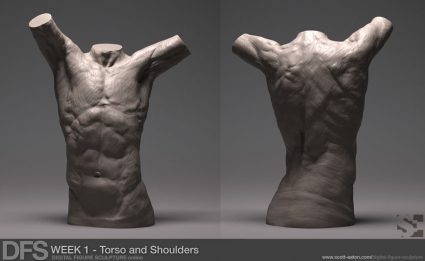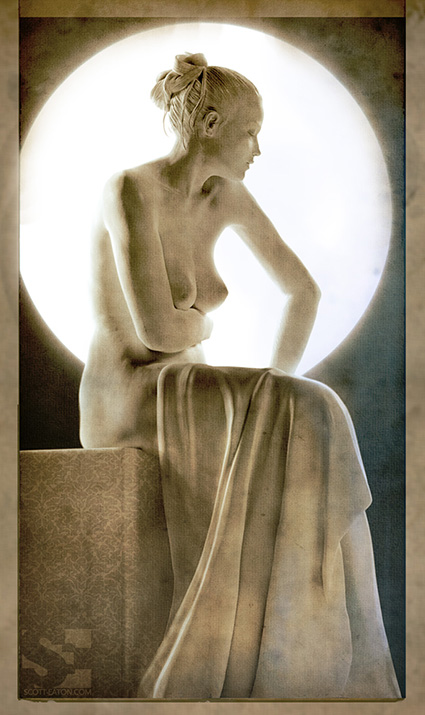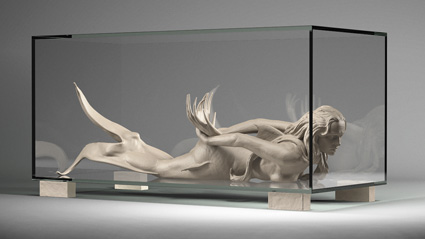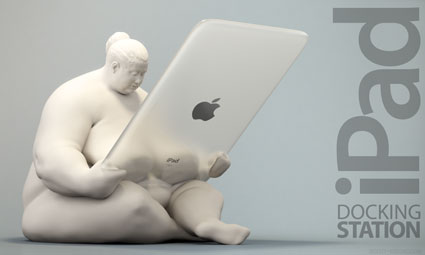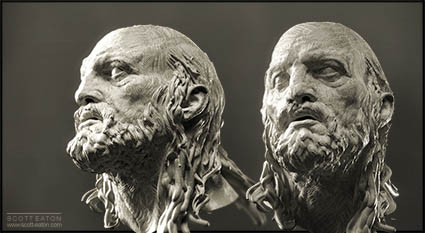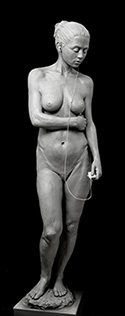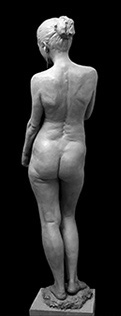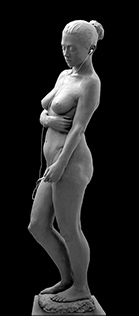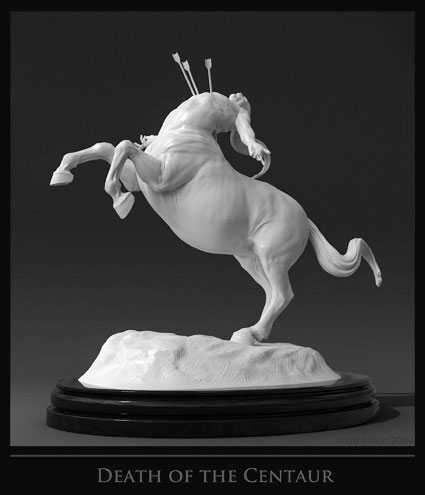In Week 4 artists investigate the hands in-depth. Hands are one of the most difficult parts of the body to sculpt and demand the utmost attention to construction, proportions, form, and gesture to do successfully. They are second only to the face in expressiveness so we spend the entire week doing a single detailed study of the hands in Zbrush. The lessons learned here will be important to transfer to the full-figure sculptures started in week 6. After a lecture covering the anatomy and proportions of the hands, artists sculpt using the best reference available – their own hands. This week also includes lectures on making hands using Zbrush’s flexible and quite useful ZSpheres and reading assignments from George Bridgman and Andrew Loomis.
As many of you already know, the second session of my online Digital Figure Sculpture course is underway. A group of artists are hard at work learning new techniques in ZBrush and studying hard to make great progress as figure sculptors. To give everybody a taste of the types of projects they are working on week-to-week, I have started a blog where I will post updates as the course progresses. If you have an interest in ZBrush and figure sculpture, check it out.
Digital Figure Sculpture Course: Weekly Blog
Weekly Fragments:
During the first half of the course, students complete weekly studies that focus on areas of the body in isolation. These are a few of the ZBrush exercises that students are shown how to complete.

This week artists refine their knowledge of the forms of the upper arm and the forearms. In Zbrush, they start with ZSpheres and build a shoulder “fragment” that is cutoff mid-chest. From here they sculpt the forms of the arm flexed to 90 degrees with the hand supinated (palm-up). Once this sculpture is complete they transpose the forearm from supinated to pronated and adjust the forms and flows of the muscles accordingly (paying special attention to the new alignment of the flexor and extensor muscles of the forearm). One final transpose extends the arm at the elbow, and all the forms of the upper arm – biceps, triceps, brachialis, are modified.
In the second week we continue with the torso, but now focusing on the articulation of the shoulder as the arm is raised. We do a comprehensive investigation of what is known as the “scapulo-humeral rhythm” – the ratio of scapular rotation to arm elevation. Students sculpt a torso with the arms at the side and them modify the sculpture moving the arms through 45, 90, 135, and 180 degrees of rotation. The 0 and 180 extremes are shown above. In ZBrush artists start with a base mesh and use Transpose and masking to rotate the arm and scapula in the correct ratio. Each pose is stored on a ZBrush layer, and the subdivided mesh is sculpted at high resolution to capture all the subtleties of the muscular forms at different articulations. Students are lead through the exercise by a series of videos showing Scott sculpting the torsos in ZBrush.
During the first week of the Digital Figure Sculpture course students concentrate on sculpting one male and one female torso. They work on the torso in isolation in order to focus on the task at hand, without distraction from unfinished areas like arms, hands, and heads. The torsos are created using ZSpheres as a base and then refined using Zbrush’s new DynaMesh feature. There are short technical how-to videos that explain the new features of Zbrush and then a comprehensive Working Example showing Scott creating the torso above from start to finish.
Here are a couple images of a digital sculpture that I did for a ‘recently released pirate movie’. At the time the film was in early preproduction and this piece was more speculative design than anything concrete for the film, though it is loosely tied to an event in the script. The piece also has thinly veiled references to Damien Hirst’s infamous pickled shark sculpture. For more details on how I created the sculpture keep reading below.
The first digital prototype of Scott’s iPad docking station has been seen in the wild. For anyone new to the project, find concept sketches here.
“A stylish docking station for syncing, charging and display. An evocative blend of ancient fertility symbolism and modern technology worship. I want one!”
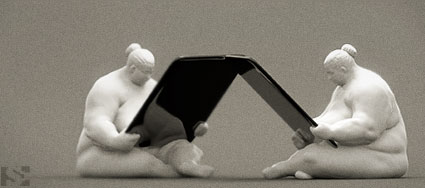
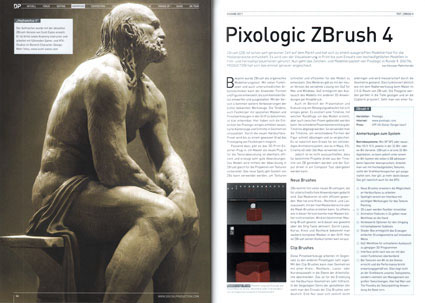
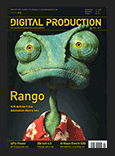 The April 2011 issue of German film/VFX magazine Digital Production features a full-page Hephaestus image to introduce their writeup on Zbrush 4. The image is backwards but otherwise looks good. Their article gives a great overview of Zbrush, my digital sculpting tool of choice.
The April 2011 issue of German film/VFX magazine Digital Production features a full-page Hephaestus image to introduce their writeup on Zbrush 4. The image is backwards but otherwise looks good. Their article gives a great overview of Zbrush, my digital sculpting tool of choice.
Here are a few images of the sculpture, shown in clay above, which I unveiled during my lecture at the Tate Modern on “Bit to Atoms – The Process and Evolution of Digital Sculpture“. During the lecture I talked about the process of making the piece – first creating a digital maquette in Zbrush to establish the balance, weight, and proportions of the figure, and then using that digital data as a guide for constructing the full-sized figure sculpture in clay.
click for larger image
Here is an image of my latest digital sculpture, The Death of the Centaur. The sculpture depicts the moment when the king of the centaurs, Chiron, is struck down by an errant volley of Hercules’ poisoned arrows.
Chiron originally appears in Greek mythology as an exemplar of wisdom and learning, tutoring many of the legendary Greek heroes including Achilles, Jason, Theseus, and Hercules. He meets his end at the hands of Hercules who, during a skirmish with unruly centaurs, accidentally wounds Chiron with an arrow poisoned with Hydra blood. Being immortal Chiron can’t die, but lives in agony until he selflessly barters his immortality for Prometheus‘ freedom (note: I have take small liberties with the original story in my depiction of events). Chiron subsequently makes appearances in other stories including Dante’s Inferno, where he guards the seventh level of hell, and in Goethe’s Faust.

